Designers for a Show: How Four Stylists Approached Moschino’s 40th Anniversary Collection
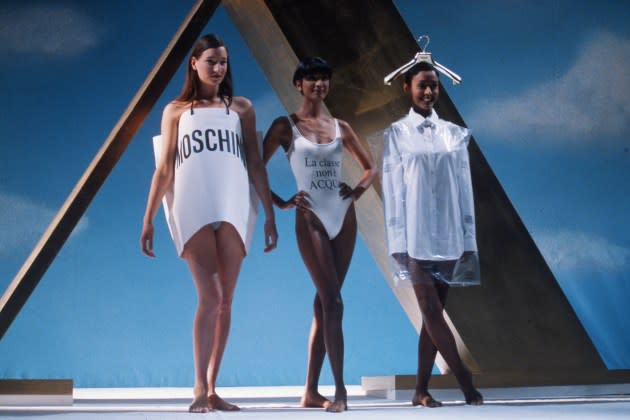
MILAN — Forty years to celebrate, four international stylists and one goal: bring joy, energy and happiness to the audience.
That was the common objective shared by stylists Carlyne Cerf de Dudzeele, Katie Grand, Gabriella Karefa-Johnson and Lucia Liu, whom Moschino called to spearhead this season’s collection. Each was asked to create 10 contemporary looks inspired by the works of founder Franco Moschino to mark the brand’s 40th anniversary.
More from WWD
GCDS' Giuliano Calza Discusses Naples as Inspiration, Show Format - and a Lot More
Fratelli Rossetti at 70: A Family Story of Style Coherence, Retail Findings, Personal Milestones
Three Debuts in Presentations at Milan Fashion Week Spring 2024
To be staged on Thursday at 6 p.m. CET, the runway show is conceived to pay tribute to “the remarkable achievements” of the late designer — who died at age 44 in 1994 — “and his enduring legacy,” as the company stated when it first revealed the project last June.
More pragmatically, it will also help temporarily fill a gap for a brand that is undergoing a transitional phase as the role of its creative director is still vacant. Parent company Aeffe Group has not yet revealed a successor to Jeremy Scott, who exited Moschino last March after 10 years. Scott had succeeded Moschino’s longtime friend and colleague Rossella Jardini.
Scott’s tenure roughly matched that of the founder himself. Born in Abbiategrasso, a suburb of Milan, Moschino launched his company Moonshadow in 1983, after beginning his career in 1971 as an illustrator and working for Gianni Versace, as well as designing for the Italian label Cadette from 1977 to 1982.
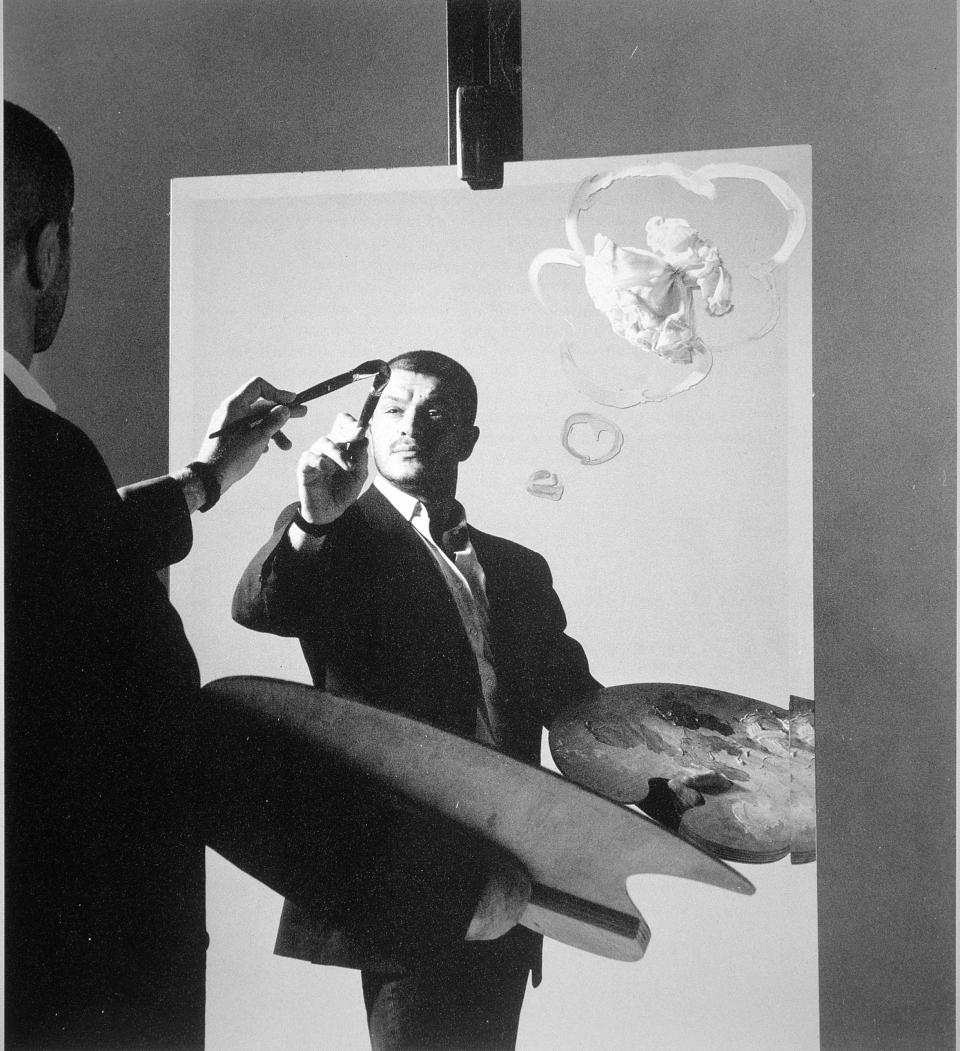
In just 10 years at the helm of his own brand, Moschino built a rich visual universe that the four stylists were called to deep dive into for the upcoming show.
One of the most provocative, satirical and charismatic figures in the Italian fashion scene, Moschino captured the imagination of retailers and consumers with his quirky and tongue-in-cheek sense of humor and by offering innovative designs while spoofing and making fun of the self-conscious seriousness of high fashion.
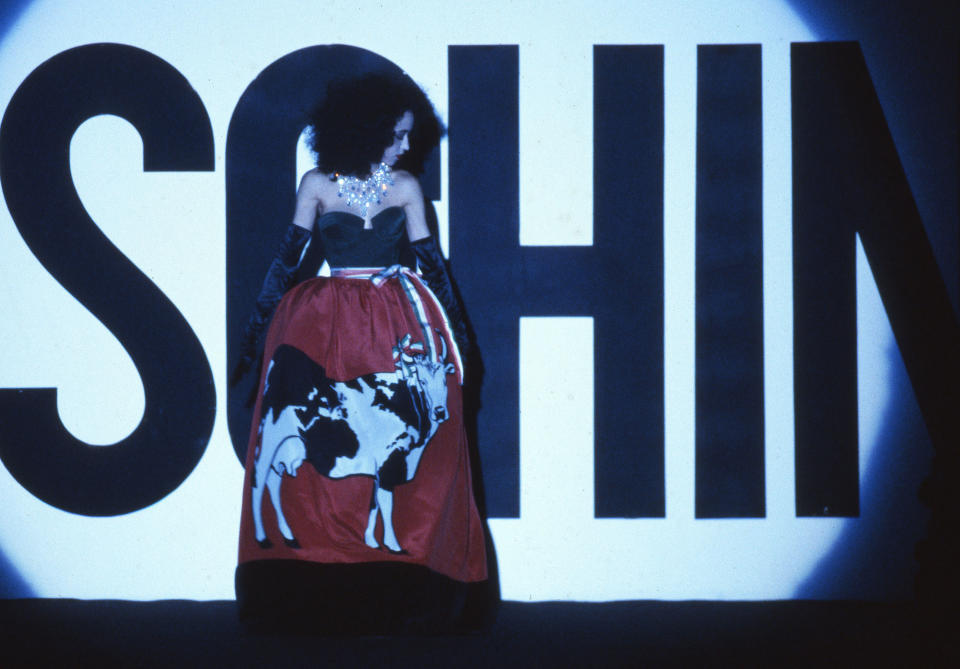
“Rebellion — to me Franco embodied the fact that you don’t have to do this fashion thing by anyone else’s rules but your own,” said Karefa-Johnson when asked about the designer’s biggest legacy.
“I couldn’t think of a single reason not to [join this project], and believe me, I tried,” continued the New York-based stylist. “Mostly because it’s never easy exiting one’s comfort zone — especially in a hotly anticipated, high visibility house that is between creative directors. But with most things, it isn’t worth doing if it doesn’t scare you a little bit. I approached this project with the aim of enjoying myself, having fun and honoring the legacy of a designer who, whether I knew it or not, has always had an impact on the kind of work that I do and the fashion I am drawn to,” she said.
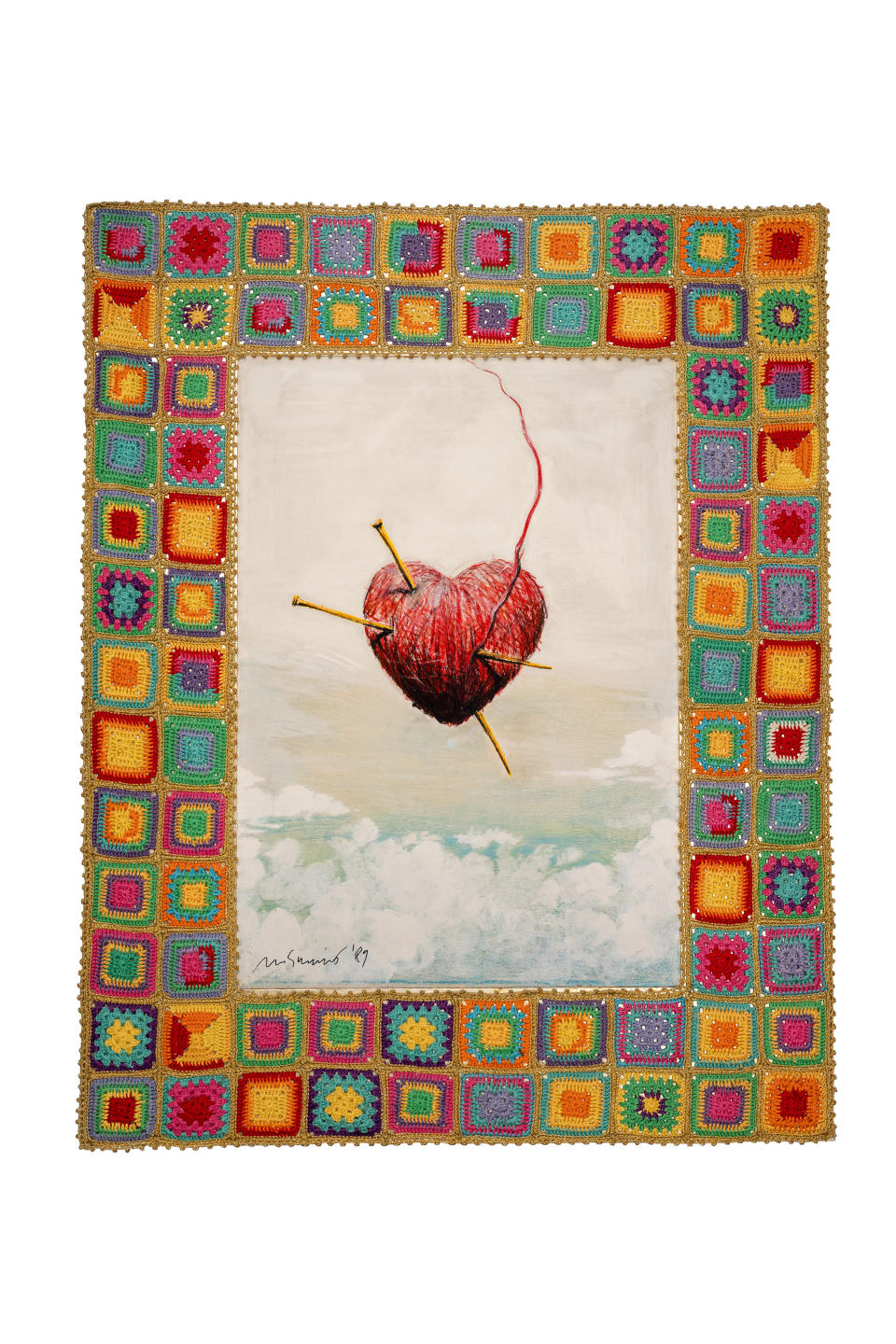
Liu shared her admiration for the designer, praising his “sense of humor, wittiness and infinite imagination.”
“Looking back to this 20 [and more] years in fashion industry, starting from a time when I was studying fashion design in the U.K., Moschino has always been a part of my journey. First as design inspiration, then as a customer of the brand and later as a stylist I have introduced Moschino to many of my clients. For this project, I wanted to combined all of these perspectives and create a collection that has multiple dimensions,” she added.
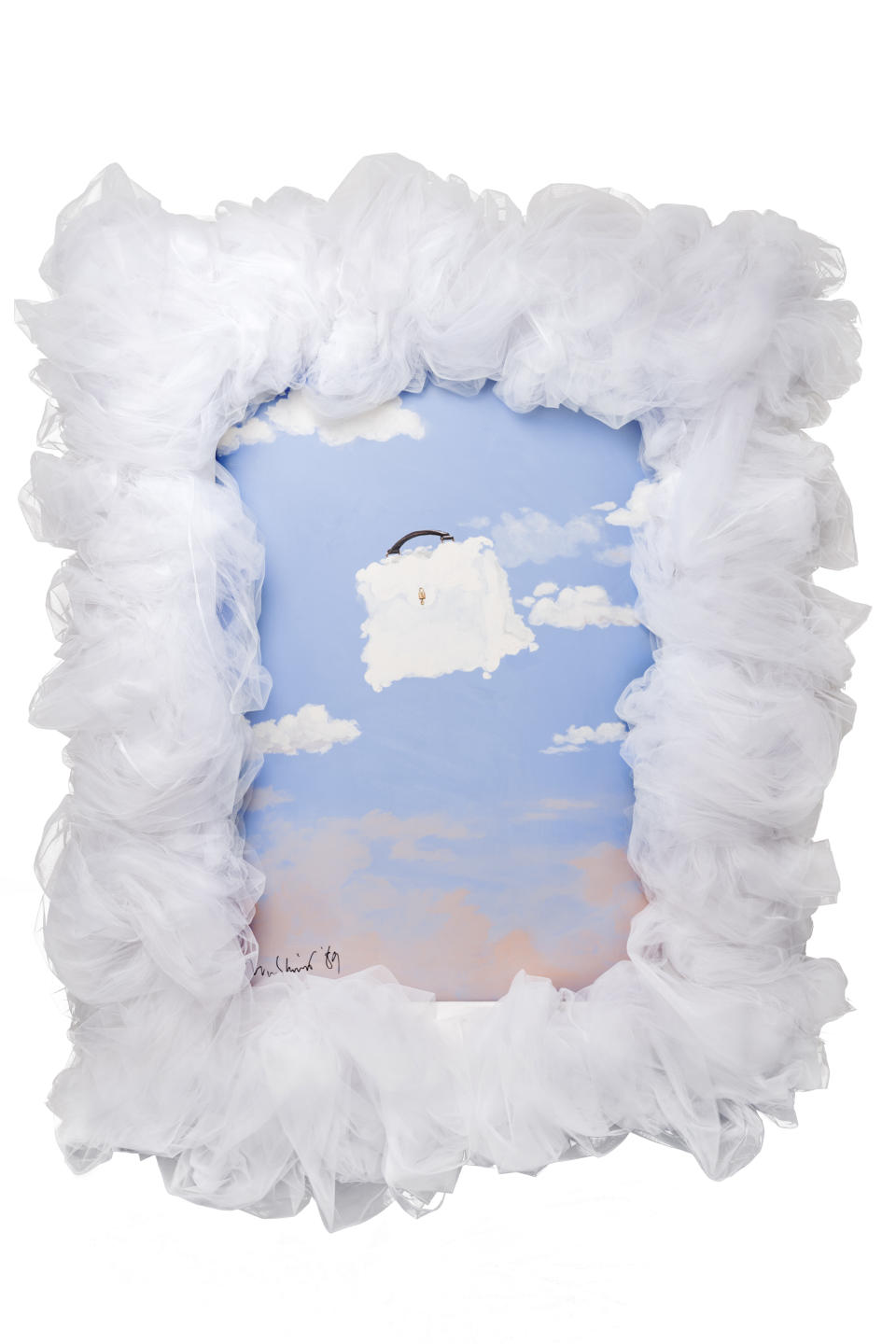
Based between Beijing and London, Liu said her creative process started from archival research, while keeping in mind her own aesthetic and overall look she wanted to create, an image “that is strong and independent, yet still romantic.”
“Another key feel for the collection is the hybrid of retro and futuristic, which very much reflects my own aesthetic output, which is a hybrid of my Chinese roots and overseas life experience,” Liu added.
She teased this will be translated into garments via different elements, encompassing appliqué, the use of organza, prints and embroideries, as well as feathers and bows, and that she looked into ancient Chinese porcelain for color inspiration.
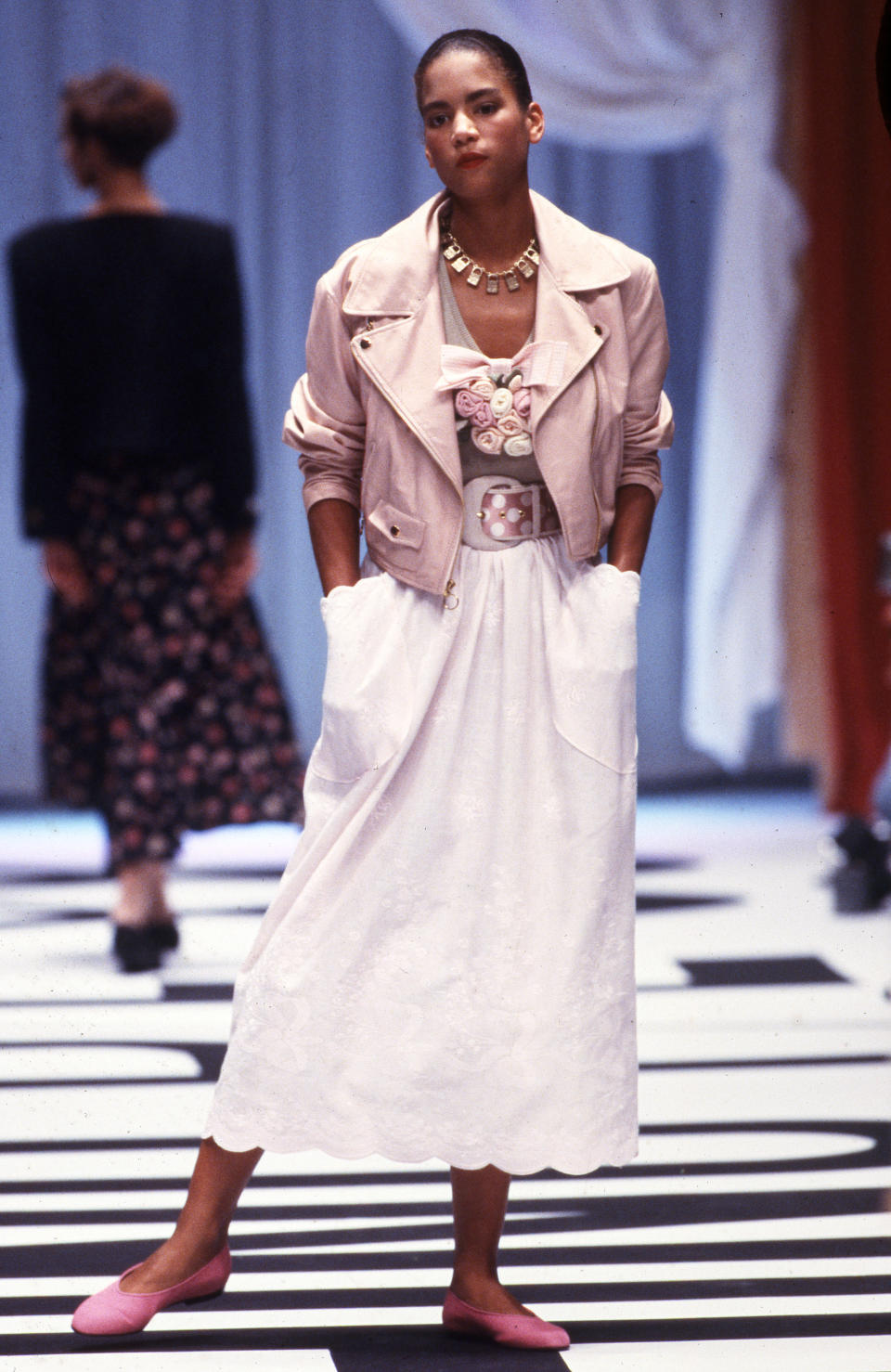
“I always knew I wanted my looks to reflect my aesthetic while at the same time being very close to the vision Franco Moschino had for this brand in the ‘90s, when I was born,” Karefa-Johnson offered.
During her research through videos of runway shows, old campaigns and marketing presentations, Karefa-Johnson was “surprised by how utterly contemporary the raw materials I was studying were.”
“Sure, we could say it’s because fashion is circular and what goes around comes around, but I choose to think it’s because Franco was ahead of his time. So, when I was creating the looks, it felt comfortable to me to stay within his wheelhouse but translate it my way,” she added.
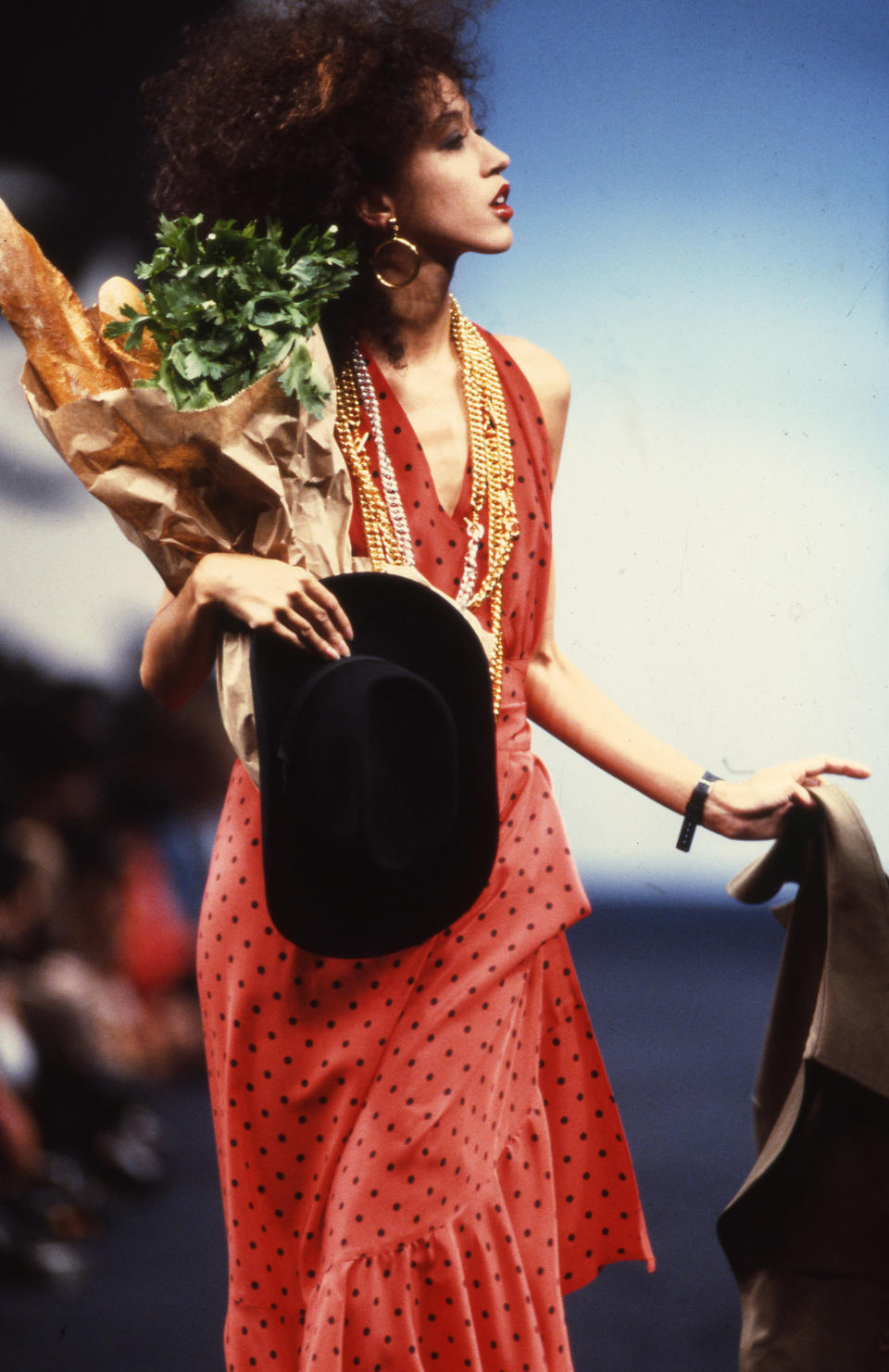
Karefa-Johnson teased she has played with some visual signifiers of the house, including polka dots, gold and chains, as well as with shrunken proportions and the brand’s iconic shopping bag, to offer her own take on Moschino’s maximalist world.
Grand also deep dived into the archives to understand “what might keep that excitement alive and do something modern.” She looked at a 1991 window display citing “Ready to Where?” for inspiration, along with Moschino’s “Gone with the wind” painting.

While she was mum on how these references eventually turned into the clothes she created, she teased that the key words guiding her creative process were “organized chaos” and that she collaborated with multi-award-winning British choreographer and director Wayne McGregor to both help achieve it and for her part of the presentation.
Asked about the biggest challenge faced throughout the project, Grand pointed to “all the hard work it takes to earn the right to be frivolous.”
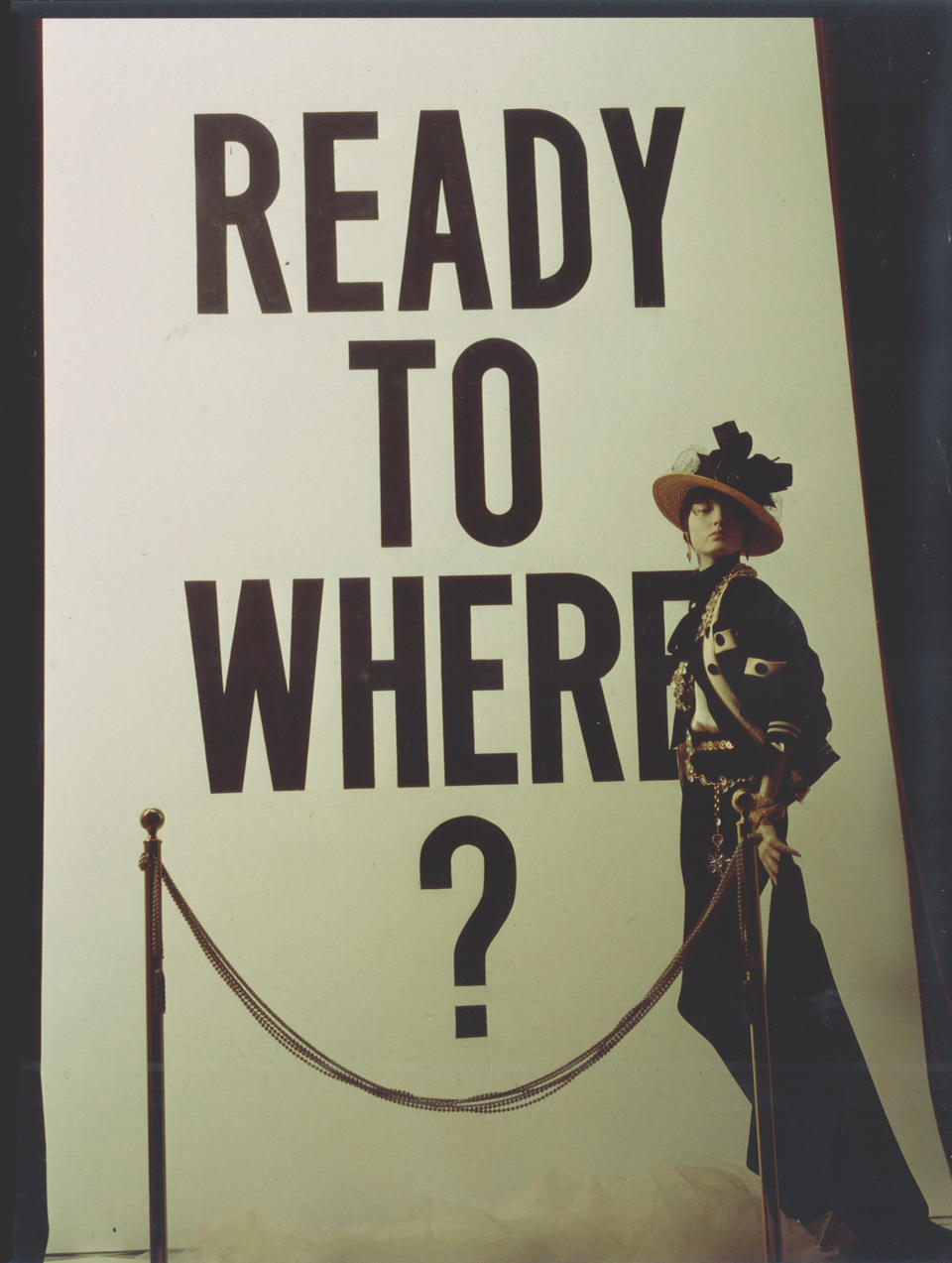
“Quite ironically, the most challenging part for this fashion editor was the editing,” Karefa-Johnson said. “I definitely have a newfound empathy for the designers I work with when I approach their collections with a merciless eye toward reducing and focusing.”
Karefa-Johnson, who works with brands ranging from Etro to Altuzarra, in addition to serving as global contributing fashion editor at large at Vogue, said that the main difference between designing the looks for Moschino and her bread-and-butter tasks as a stylist was that she was the one to call the shots this time.
“I have focused more on the garment itself, from the fabrics to its texture,” noted Liu, who also found challenging the race against time it was to develop her part of the collection in just two weeks.
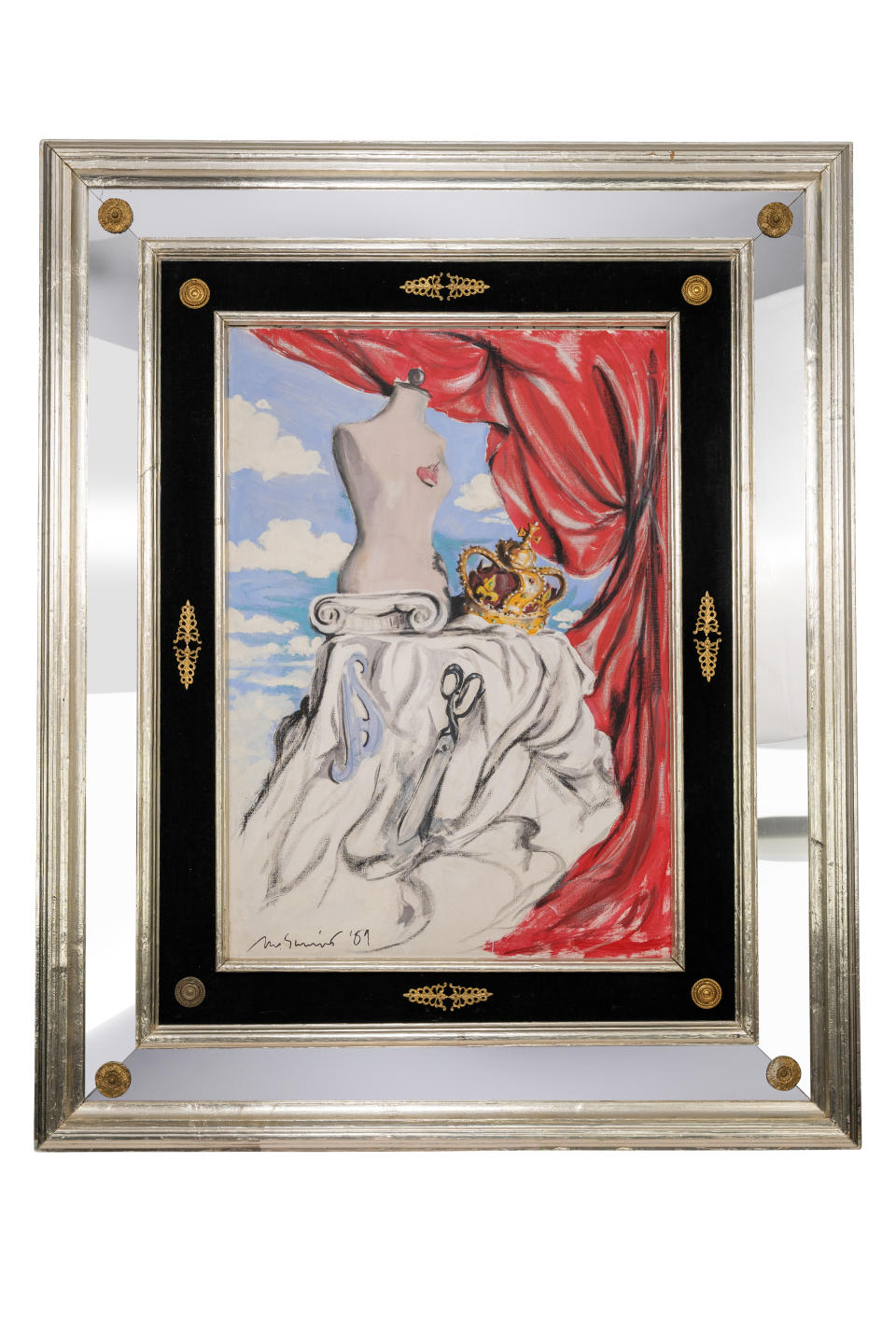
“No difference. I work with my instinct, as I have always done and always will,” said Cerf de Dudzeele, instead. “It wasn’t challenging, either. I did all the pieces I know by heart from all my life.”
For the French stylist, art director and photographer, joining the project was a matter of respect toward the company “I was part of for 10 years.” She said she was inspired by her own classic looks and high-and-low eccentric mix to develop her 10 looks, with the goal to offer a collection in which “you can mix every single piece,” and they “all fit in a carry-on.”
“It’s all about timeless chic and attitude, attitude, attitude,” she said.
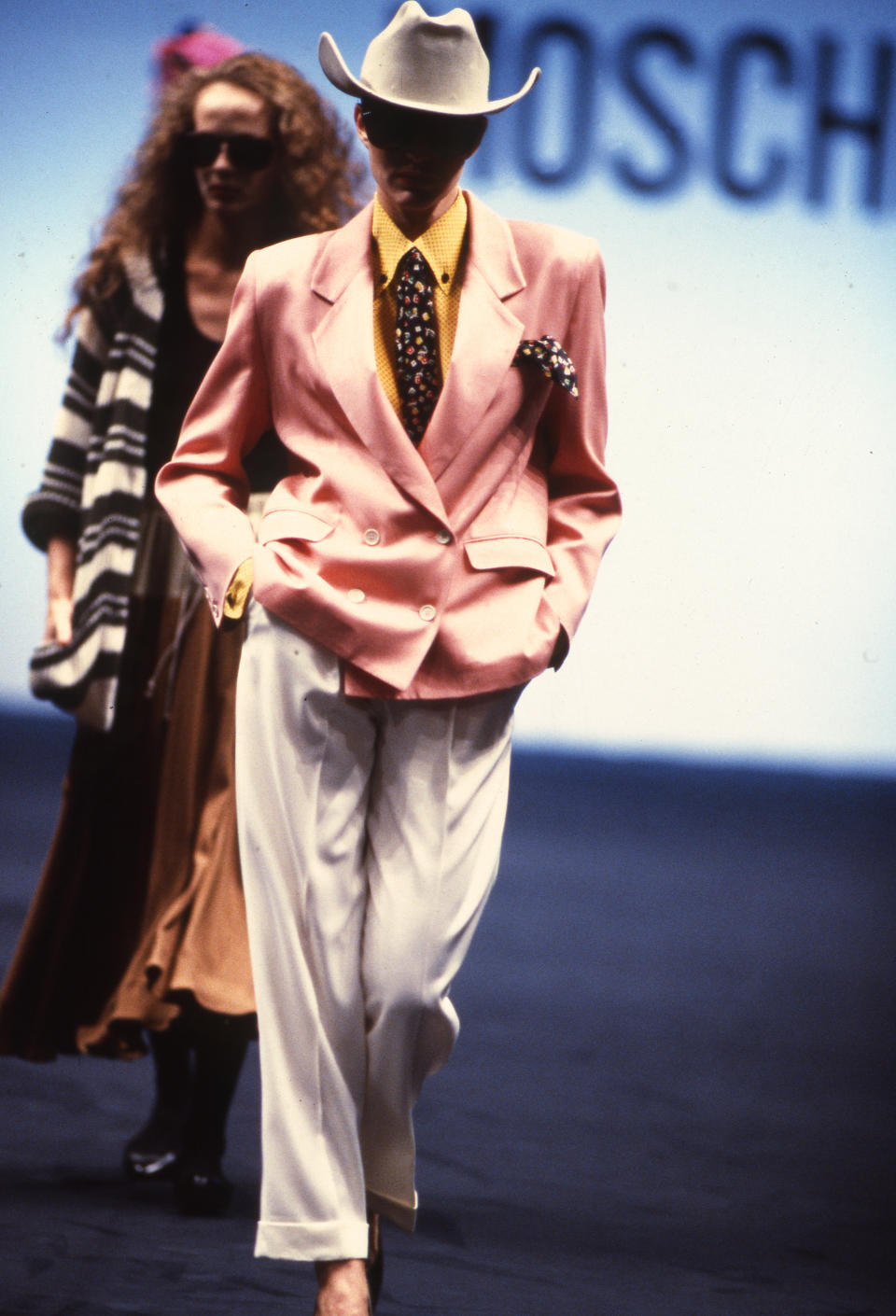
Moschino’s approach was often compared to the work of Elsa Schiaparelli for his blend of art, surrealism and irreverence, but his unique take imbued with irony and social commentary set him apart. Along with his trademark signatures — graphics such as happy faces, hearts and peace signs — in designs, Moschino amplified his point of view beyond products through themed store windows and irreverent ad campaigns, which often spoke out against drug abuse, violence and animal cruelty.
Meanwhile on the catwalk, under Moschino’s touch suits were accessorized with knives and forks, jackets metamorphosed into garment bags, shoes looked like miniature taxis, hats were formed out of teddy bears, and fashion classics such as the Chanel jacket were mocked with garish trimmings and details.
Bold messages filled his imaginative world, too. For example, “Expensive Jacket” was embroidered in gold across the back of a cashmere jacket; “Bull Chic” on a matador-styled outfit; “For Fashion Victims Only” printed on the back of a white men’s shirt with extra-long sleeves wrapped around the torso to recall a straitjacket.
“Fashion should be fun,” he once told WWD, “and it should send a message. I like to use clothes as billboards.”
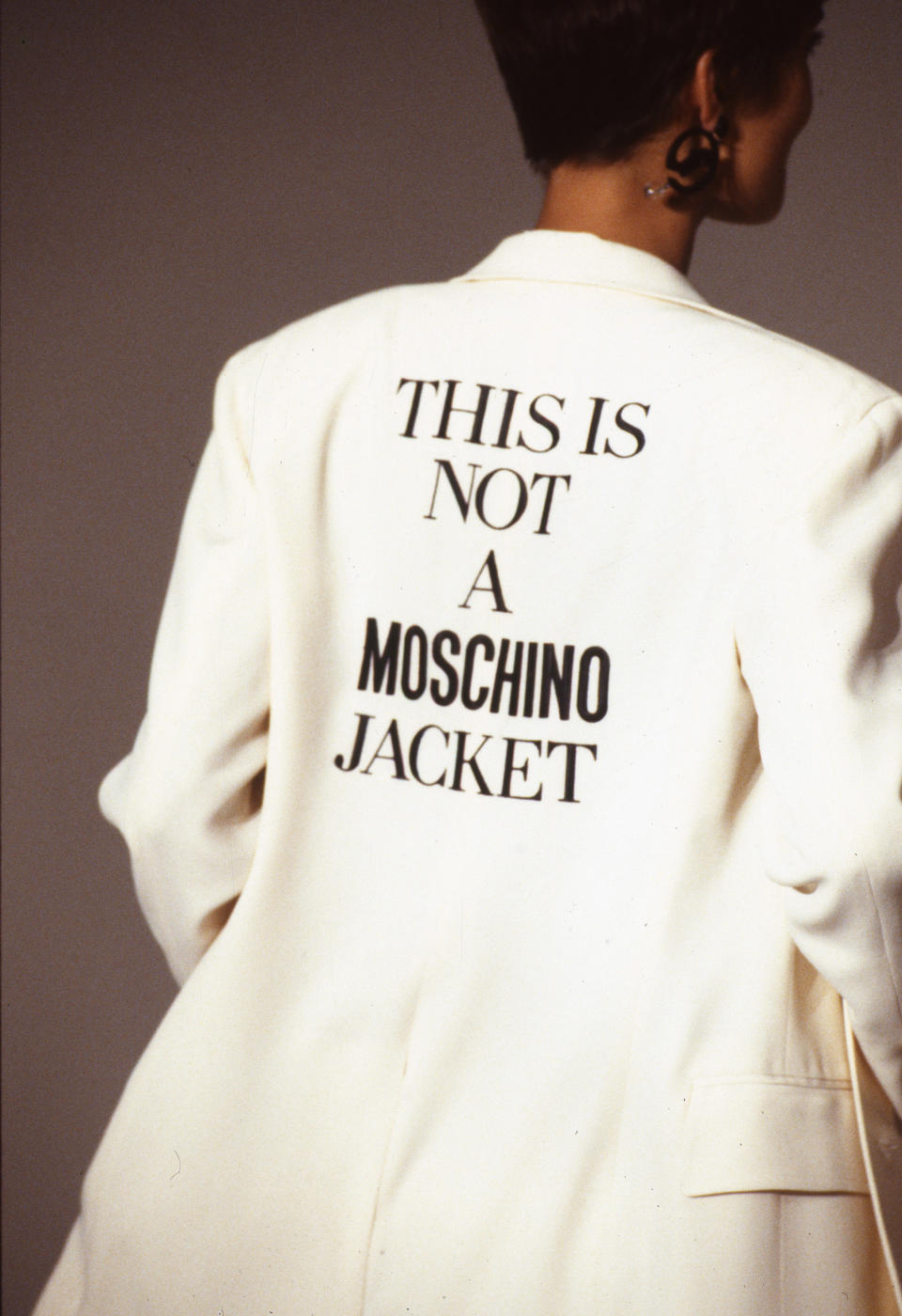
Best of WWD


